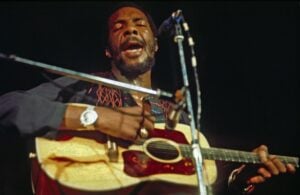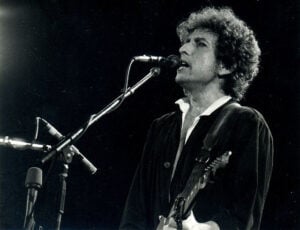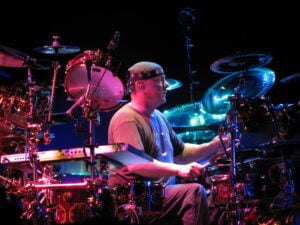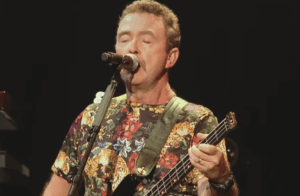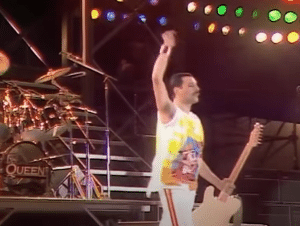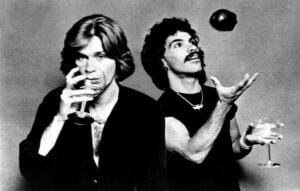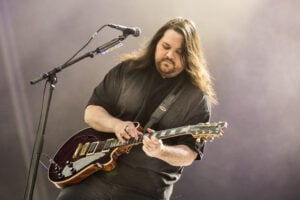10 ’80s Power Ballads That All Sound the Same
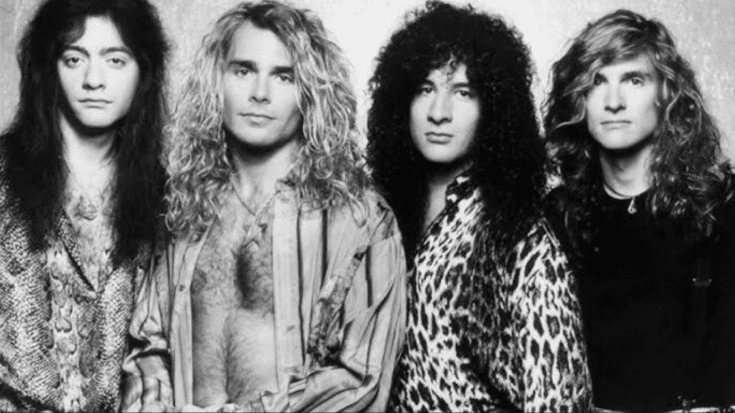
via Cokies Collection / YouTube
The 1980s gave rise to many power ballads that followed a similar musical formula. These songs often featured soaring vocals, dramatic guitar solos, and anthemic choruses. Their production and structure became so familiar that many critics and fans noted the similarities among them. In this article, we examine ten famous power ballads from the 1980s that share these common traits.
1. “Every Rose Has Its Thorn” by Poison
Released in 1988, “Every Rose Has Its Thorn” by Poison became one of the most recognizable power ballads of the decade. The song uses a slow, steady chord progression and a repeated refrain that emphasizes the theme of lost love. Listeners could easily predict the musical build-up as the vocals climbed to a higher pitch.
The track’s arrangement follows a formula that many other power ballads adopted later on. The guitar work and gentle percussion set a somber tone, while the lyrics repeat key phrases that reinforce the emotional message. Its similarity to other ballads of the time made it both popular and, to some, monotonous.
2. “I Want to Know What Love Is” by Foreigner
“I Want to Know What Love Is,” released in 1984 by Foreigner, is known for its rich, layered vocals and grand production. The song’s structure, with its slow build and explosive chorus, became a blueprint for many later ballads. It features a memorable keyboard line that repeats throughout the track, adding to its signature sound.
This ballad captures a sense of longing that resonated with audiences. The repeated lyrics and familiar chord changes made it easy to sing along to, but they also contributed to a feeling of sameness when compared to other hits of the era. Its style became one of the standard molds for the genre.
3. “Open Arms” by Journey
Journey’s “Open Arms,” released in 1981, set the standard for emotional ballads with its soft piano introduction and smooth vocal delivery. The song’s repeated refrain and consistent melody are hallmarks of the power ballad style. It tells a story of vulnerability and hope in love, drawing listeners into its simple yet effective narrative.
The track’s arrangement features a gentle build-up that mirrors the structure seen in many similar songs. The repeated chorus and the smooth interplay of guitar and keyboards provided a predictable pattern. Its enduring popularity was partly due to its adherence to the familiar formula of the power ballad.
4. “Total Eclipse of the Heart” by Bonnie Tyler
Bonnie Tyler’s “Total Eclipse of the Heart,” released in 1983, is often remembered for its dramatic build and sweeping orchestration. The song employs a repetitive hook that drives the melody forward. Its lush production and thunderous chorus became a template for many power ballads that followed.
The repeated chorus and layered vocals give the track a powerful and familiar sound. Despite its unique vocal style, the song follows a clear formula that fans of the genre recognize immediately. The repetition in its structure helped to build anticipation, but it also contributed to a sense of uniformity among similar songs from the 1980s.
5. “Alone” by Heart
“Alone,” recorded by Heart in 1987, exemplifies the 1980s power ballad with its strong vocal performance and soaring guitar solos. The song features repeated phrases in its chorus that emphasize the feeling of isolation and longing. Its arrangement is built on a steady, predictable chord progression that underscores the emotional lyrics.
The track’s repetitive structure made it instantly recognizable to listeners. The familiar pattern of soft verses leading to an explosive chorus became a common theme in many ballads of that time. Despite the personal intensity of the performance, the formulaic nature of the song often made it blend into the broader trend of similar hits.
6. “Is This Love” by Whitesnake
Whitesnake released “Is This Love” in 1987, a ballad that became known for its smooth melody and heartfelt lyrics. The song features a recurring guitar riff and a chorus that repeats the title several times. These elements form the backbone of its musical identity, aligning it with many other power ballads of the era.
The arrangement of “Is This Love” is built on predictable musical patterns that fans quickly recognized. Its steady rhythm and recurring refrain reinforced the emotional appeal of the song, even as they contributed to a formulaic sound. The song’s structure became a hallmark of its genre, making it instantly familiar to listeners.
7. “The Search Is Over” by Survivor
Survivor’s “The Search Is Over,” released in 1985, is another example of an ’80s power ballad that follows a familiar formula. The song is built on repeated verses and a soaring chorus that emphasizes its message of finding lasting love. The structure of the song is simple, relying on predictable chord changes and repeated melodic lines.
The consistency in its musical elements made “The Search Is Over” a standout yet similar track among its peers. Its use of recurring motifs and a repetitive structure was a common trend among ballads of the period. The familiar format helped listeners connect with the song, even as it reflected the broader stylistic trends of the time.
8. “I Remember You” by Skid Row
“I Remember You,” released by Skid Row in 1989, marked a softer side of the band. The power ballad features a repeated refrain and steady chord progression that became the norm for many similar songs. Its lyrics and melody follow a pattern that echoes the standard formula of the genre, making it instantly recognizable.
The song’s arrangement is characterized by its consistent musical patterns. The repeated chorus and gentle build-up of sound created a mood that was both emotional and familiar to fans of the era. Although it stood out for its heartfelt performance, its structure was very much in line with the power ballad template of the 1980s.
9. “Heaven” by Warrant
Warrant’s “Heaven,” released in 1989, is noted for its clean production and heartfelt vocal delivery. The song uses a recurring chorus and a steady rhythm that marked it as a typical power ballad of its time. Its predictable structure allowed listeners to anticipate the emotional peaks throughout the track.
The repeated musical themes in “Heaven” made it a classic example of the genre. With a constant build-up leading to the chorus, the song offered a familiar sound that many found both comforting and overused. Its style aligned closely with other ballads of the period, reinforcing a common musical formula.
10. “When the Children Cry” by White Lion
White Lion’s “When the Children Cry,” released in 1989, deals with themes of hope and sorrow through its gentle melody and repeated refrain. The song features a slow build with consistent musical elements, such as a recurring keyboard line and repeated choruses. These features made it sound very similar to other ballads of the time.
The structure of “When the Children Cry” relied heavily on repetition to create an emotional effect. Its steady progression and familiar format allowed listeners to easily follow along with the music. The song’s approach, though effective in conveying its message, mirrored the standard techniques used in many ’80s power ballads.
















